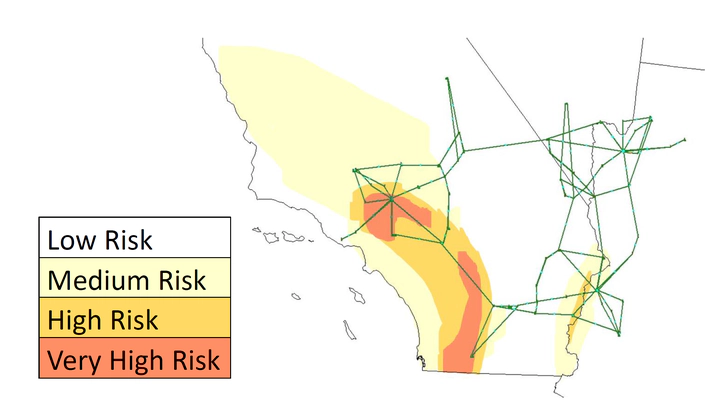
Abstract
Electric grid faults can ignite catastrophic wildfires, particularly in regions with high winds and low humidity. In real-time operations, electric utilities have few options for wildfire risk mitigation, leading to use of disruptive measures such as proactive de-energization of equipment, frequently referred to as public safety power shut-offs. Such power shut-offs have significant impacts on customers, who experience power cuts in an attempt to protect them from fires. This work proposes the optimal power shut-off problem, an optimization model to support short-term operational decision making in the context of extreme wildfire risk. Specifically, the model optimizes grid operations to maximize the amount of power that can be delivered, while proactively minimizing the risk of wildfire ignitions by selectively de-energizing components in the grid. This is the first optimization model to consider how preventive wildfire risk measures impact both wildfire risk \emph{and} power systems reliability at a short-term, operational time-frame. The effectiveness of the method is demonstrated on an augmented version of the RTS-GMLC test case, located in Southern California, and compared against two approaches based on simple risk thresholds. The proposed optimization-based model reduces both wildfire risk and lost load shed relative to the benchmarks.